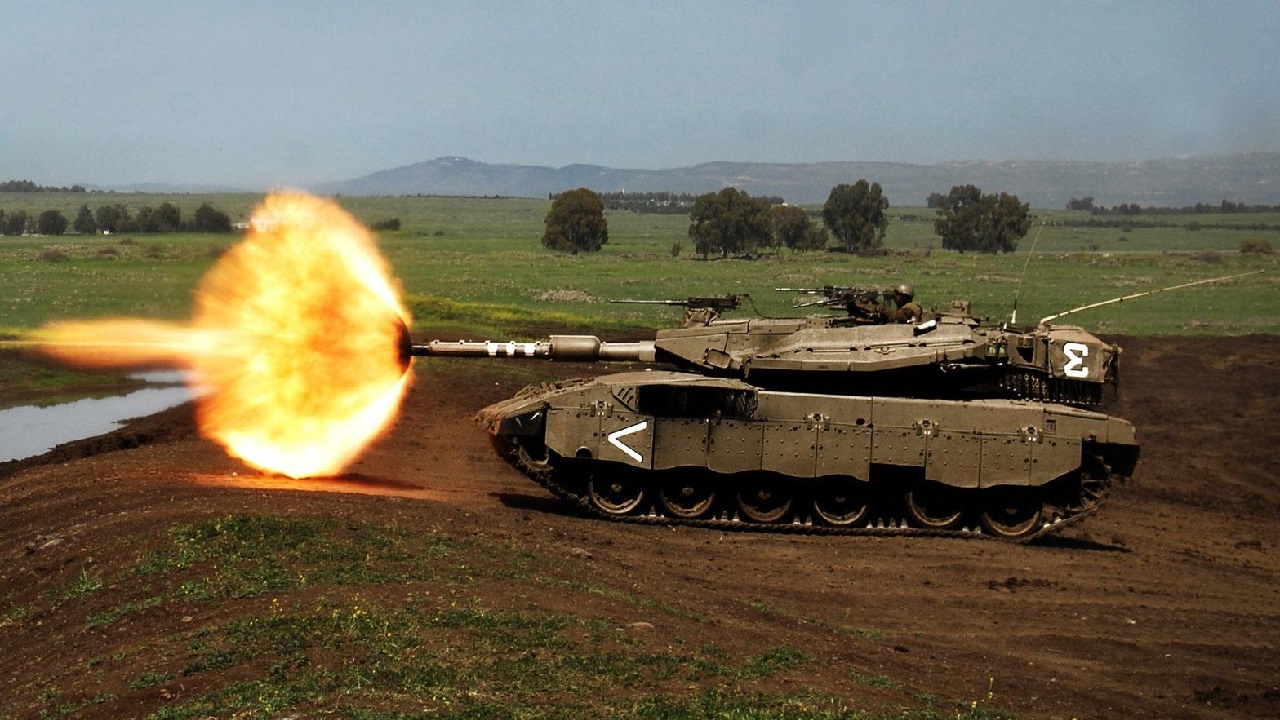It is no secret that Israel lives in a dangerous neighborhood. This simple reality has led to its fighting numerous wars and other engagements that have required excellence in armored maneuver warfare. Israel learned over the years that it needs dominant tanks to survive and to deter aggressive nations from attacking. This is why the Merkava main battle tank holds a unique place in the Israel Defense Forces (IDF).
A Bigger, Better Tank
The IDF’s tanks must be swift and powerful. The nation is surrounded. Its terrain is flat and arid, which favors fast-moving armored vehicles. Israel is always looking to learn from past battles, understand successes and failures, and then incorporate these lessons into even better tactics, operations, and strategy. Armored maneuver warfare keeps the Israelis on their toes, and without the Merkava, life in the Middle East could be even more dangerous.
The Merkava 4 entered service in 2003. An improvement on the Merkava 3 Baz, it became Israel’s main battle tank by 2004. Its highlights include a new electric turret, and a high muzzle-velocity 120mm gun that fires armor-penetrating rounds and guided munitions – the tank can even take out a low-flying helicopter. Its revolving semi-automatic magazine holds 10 rounds that can be fired rapidly. The tank carries 48 rounds in total. The Merkava 4 can also launch the LAHAT laser-homing anti-tank missile. There is a 60mm mortar that can be fired from inside the tank, and the Merkava 4 carries various machine guns.
At 65 tons, it is larger than the Merkava 3 Baz, and it has better armor than its predecessor. This armor is modular, and it can be adjusted depending on enemy tactics and mission parameters. Improved protection along the bottom of the tank protects against mines and IEDs.
How the Merkava 4 Survives and Adjusts
The Merkava 4’s Trophy Active Protection System allows early-warning survivability against anti-tank missiles. That system’s manufacturer, Rafael, says Trophy “creates a neutralization bubble around the vehicle. It rapidly detects, classifies and engages all known chemical energy threats – including recoilless rifles, ATGMs, AT rockets, HEAT tank rounds, and RPGs.”
Trophy also protects against every tank’s greatest nemesis – guided missiles that attack the top of the turret. Meanwhile, to mask its movement, the Merkava 4 can drop smoke grenades.
In 2014, during the seven week-long Gaza war with Hamas, the Merkava 4s were instrumental in finding terrorist tunnel networks. They showed their survivability by intercepting enemy anti-tank missiles and RPGs. The Trophy system worked well.
The tank’s crews can plan and adjust operations, plans, and missions on the fly. They accomplish this by interacting with the mission control computer. This system updates the tank’s position at all times and increases situational awareness. The IDF is known for having a less centralized command structure. This means tank commanders and their crewmates have much latitude in combat, and they can take a high level of initiative during tank battles without specific commands from higher echelons. The Merkava 4 helps make this sort of initiative-taking possible.
A 1,500-horsepower engine allows for a top speed of 40 miles per hour. With its improved suspension, the tank has ample mobility in all types of terrain.
Coming Upgrades
The updated Merkava-Barak variant will have an even better mission computer. This will use artificial intelligence that can improve target acquisition while lessening the crew’s workload. The system will automatically seek out enemy combatants who are readying to fire anti-tank missiles, leaving the Israeli soldiers to focus on bigger targets. The Merkava-Barak will start serial production this year, and the upgraded tanks will enter IDF service in the middle of 2023. The Trophy system will also be updated for even better survivability.
Israeli weapons are always evolving. Defense contractors listen closely to soldiers in the field who tell the manufacturers what is needed. Tanks are threatened by anti-tank missiles, so makers find ways to mitigate those threats. Survivability is always an issue, so Trophy creates that invaluable protective bubble around the tank. Tankers prefer to change plans on the fly, and the mission computer facilitates these tactics while artificial intelligence makes the crew’s job easier. You have to hand it to the Israelis for being so nimble in their defense acquisition policy. The Merkava tank is a marvel in innovative thinking.
Expert Biography: Serving as 1945’s Defense and National Security Editor, Dr. Brent M. Eastwood is the author of Humans, Machines, and Data: Future Trends in Warfare. He is an Emerging Threats expert and former U.S. Army Infantry officer. You can follow him on Twitter @BMEastwood. He holds a Ph.D. in Political Science and Foreign Policy/ International Relations.

